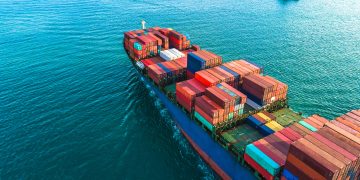The causes of the collision
 The National Transportation Safety Board today determined that the probable cause of a 2009 collision in San Diego Bay between a United States Coast Guard patrol boat and a recreational motorboat was due to the excessive speed of the Coast Guard boat in nighttime conditions in an area of high vessel density, and the Coast Guard’s ineffective oversight of its small boat operations nationally and at Coast Guard Station San Diego.
The National Transportation Safety Board today determined that the probable cause of a 2009 collision in San Diego Bay between a United States Coast Guard patrol boat and a recreational motorboat was due to the excessive speed of the Coast Guard boat in nighttime conditions in an area of high vessel density, and the Coast Guard’s ineffective oversight of its small boat operations nationally and at Coast Guard Station San Diego.
On December 20, 2009, at about 5:44 p.m. PST in San Diego Harbor, a 33-foot-long Special Purpose Craft-Law Enforcement (SPC-LE) Coast Guard vessel with five crewmembers aboard collided with a 24-foot-long Sea Ray recreational boat carrying 13 people. The collision occurred during an annual holiday boating event, the Parade of Lights. The Coast Guard boat, which was responding to a reported grounding (considered a non-emergency), struck the Sea Ray from behind. As a result, an 8-year-old boy was killed and four other people were seriously injured. None of the crewmembers in the Coast Guard boat were injured.
The Coast Guard boat, when it struck the Sea Ray, was being operated at planing speed, which was at least 19 knots and possibly as high as 42 knots.
“The Coast Guard is an organization that traditionally fills the role of rescuer,” said NTSB Chairman Deborah A.P. Hersman. “It is especially sad that a family night of celebration in the Bay ended in tragedy because of a coxswain’s poor judgment and the Coast Guard’s ineffective oversight of vessel operations.”
Visual conditions in San Diego Bay are particularly challenging at night when it becomes more difficult to distinguish small individual boat navigation lights from other lights in the area. However, the investigation showed that at least one crewmember saw the Sea Ray as they approached it from behind. Three of the five crewmembers on the Coast Guard boat, including the operator, refused to be interviewed by NTSB investigators.
Also causal to the accident was the Coast Guard’s lack of oversight of its small boat vessel operations. Coast Guard Station San Diego lacked an effective oversight system to monitor the operation of their vessels while on patrol. The presence of such a system could have prevented the accident. In addition, the Station’s officer of the day, who was on the Coast Guard boat at the time of the accident, did not advise the coxswain to slow down.
The NTSB recommended that the Coast Guard increase vigilance in checking the speed of their boats, establish policies that prohibit excessive speed, and develop a monitoring system to detect deviations from standard operating guidance and procedures. It also recommended that the Coast Guard implement procedures to ensure that crewmembers can compensate for obstructions potentially affecting forward visibility on their SPC-LE vessels.
A synopsis of the NTSB report, including the probable cause, conclusions, and safety recommendations is available.
Source: National Transportation Safety Board




























































